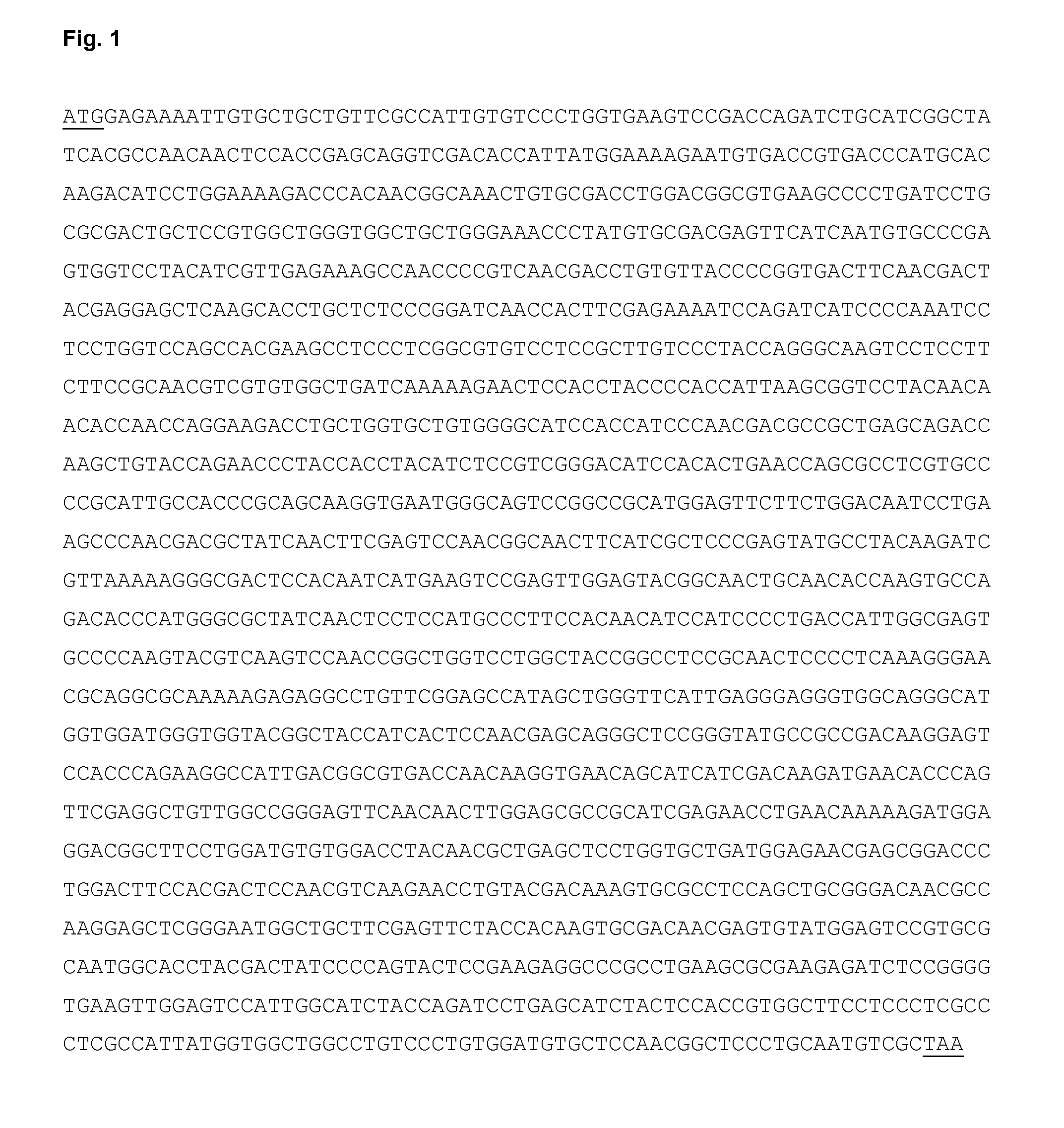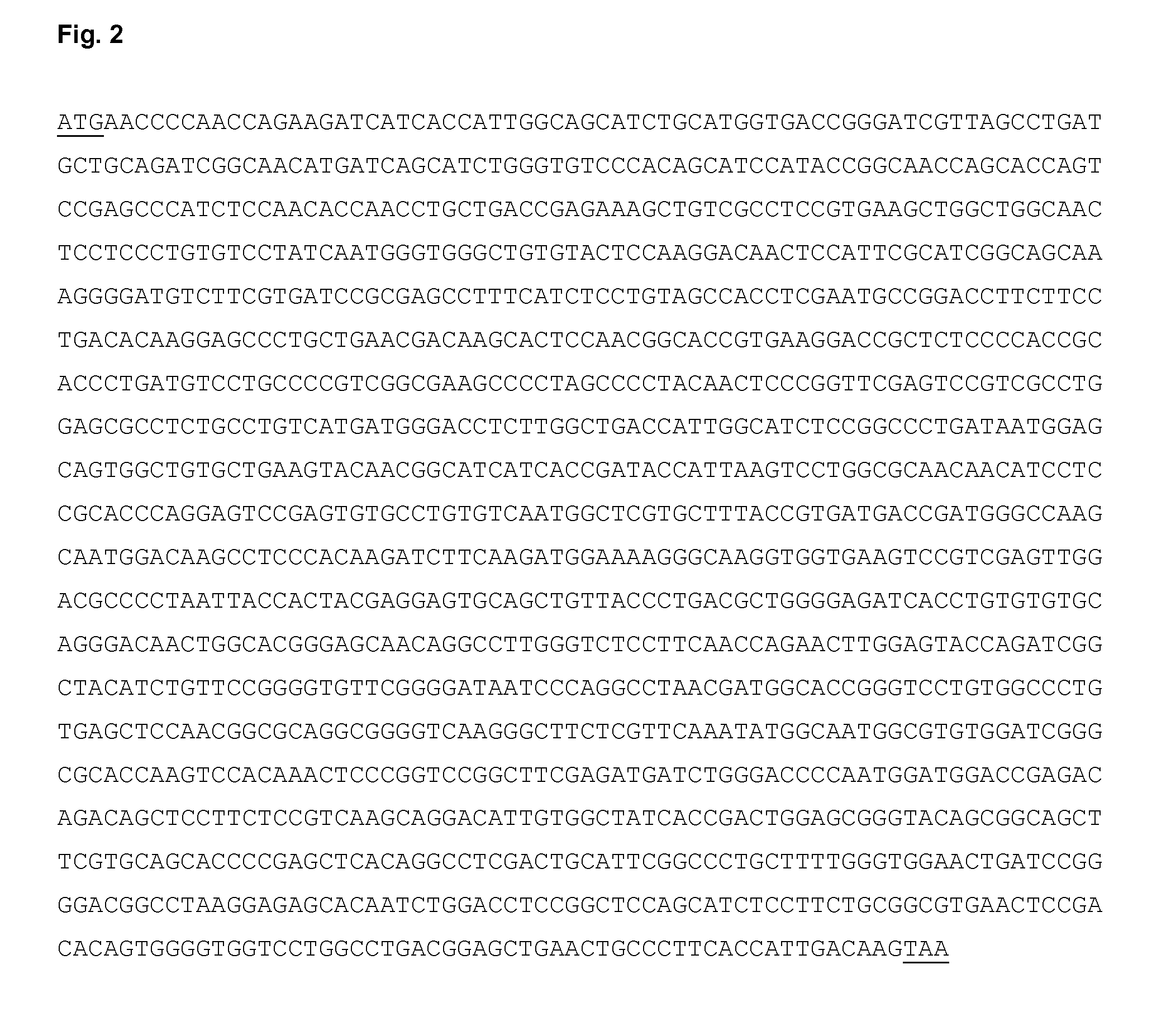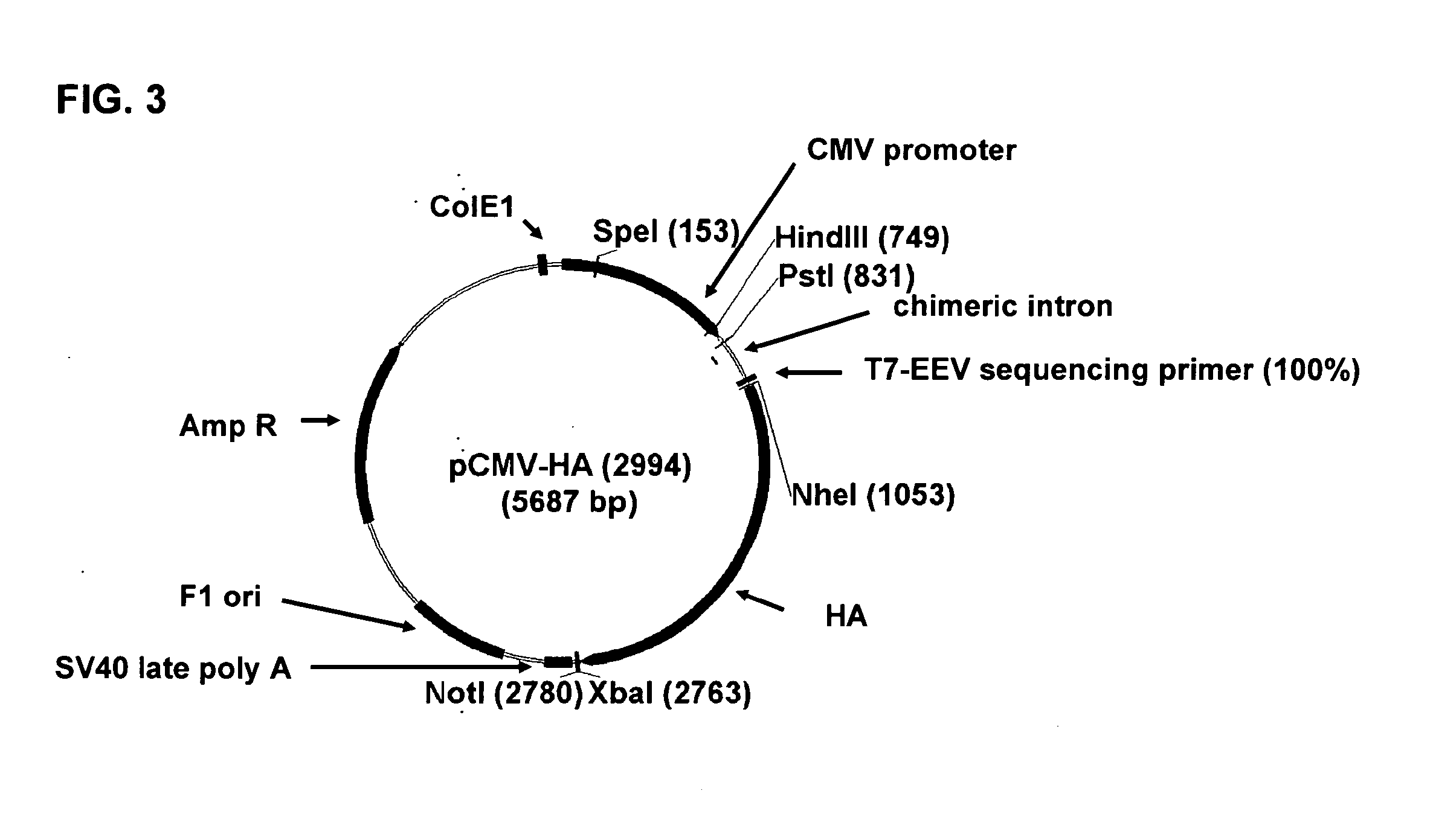Extraneous agents testing
- Summary
- Abstract
- Description
- Claims
- Application Information
AI Technical Summary
Benefits of technology
Problems solved by technology
Method used
Image
Examples
examples
1. Preparation of the Polypeptide Encoding HA and NA and the DNA Construct
[0141]DNA vectors have been prepared from the known sequences of the hemagglutinin (HA) and neuraminidase (NA) proteins of the influenza virus A / Viet Nam / 1194 / 2004 (H5N1) (the sequences encoding the HA and the NA, respectively, are disclosed in the PubMed database, see http: / / www.ncbi.nlm.nih.gov / , http: / / www.nchi.nlm.nih.gov / nuccore / 145284463?ordinalpos=18,itool=EntrezSystem2,PEntre z.Sequence.Sequence_ResultsPanel.Sequence_RVDocSum, and http: / www.ncbi.nlm.nih.gov / nuccore / 145284406?ordinalpos=itool=EntrezSystem2.PEntrez.Sequence.Sequence_ResultsPanel.Sequence_RVDocSum).
[0142]The HA and NA coding sequences were computationally optimized as e.g. described in Roth, D. A. et al., “Translational Engineering and Synthetic Biology”, Landes Bioscience, 2007. Specifically, the codon usage and codon-pair usage of the HA and NA coding sequences were optimized according to Oryctolagus cuniculus. Within reasonable homolog...
PUM
| Property | Measurement | Unit |
|---|---|---|
| Fraction | aaaaa | aaaaa |
| Fraction | aaaaa | aaaaa |
| Time | aaaaa | aaaaa |
Abstract
Description
Claims
Application Information
 Login to View More
Login to View More - R&D
- Intellectual Property
- Life Sciences
- Materials
- Tech Scout
- Unparalleled Data Quality
- Higher Quality Content
- 60% Fewer Hallucinations
Browse by: Latest US Patents, China's latest patents, Technical Efficacy Thesaurus, Application Domain, Technology Topic, Popular Technical Reports.
© 2025 PatSnap. All rights reserved.Legal|Privacy policy|Modern Slavery Act Transparency Statement|Sitemap|About US| Contact US: help@patsnap.com



